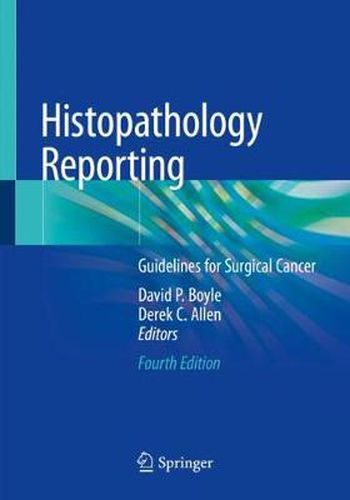Readings Newsletter
Become a Readings Member to make your shopping experience even easier.
Sign in or sign up for free!
You’re not far away from qualifying for FREE standard shipping within Australia
You’ve qualified for FREE standard shipping within Australia
The cart is loading…






This book is an easily comprehensible and practicable framework for standardised histopathology reports in surgical cancer. The pathological features of the common carcinomas are detailed and non-carcinomatous malignancies are also summarised. 8th edition TNM and WHO classifications of cancers are incorporated, with comments on any associated pathology, diagnostic clues and prognostic criteria supplemented visually by line diagrams.
Each chapter’s introduction gives epidemiological, clinical, investigative and treatment summary details. Other pathology includes updated immunophenotypic expression and molecular techniques. The impact of these ancillary investigations on diagnosis, and as biomarkers of prognosis and prediction of response to treatment is summarised, as is the effect of adjuvant treatments on cancers. Experience based clues are given throughout as aids to tumour typing, grading, staging, and gauging prognosis and response to treatment.
Histopathology Reporting: Guidelines for Surgical Cancer, Fourth Edition is invaluable for trainee and consultant diagnostic histopathologists all over the world, equipping the reader to produce high quality, clinically appropriate histopathology reports, and to participate in contemporary multidisciplinary team management of patients with surgical cancer.
$9.00 standard shipping within Australia
FREE standard shipping within Australia for orders over $100.00
Express & International shipping calculated at checkout
This book is an easily comprehensible and practicable framework for standardised histopathology reports in surgical cancer. The pathological features of the common carcinomas are detailed and non-carcinomatous malignancies are also summarised. 8th edition TNM and WHO classifications of cancers are incorporated, with comments on any associated pathology, diagnostic clues and prognostic criteria supplemented visually by line diagrams.
Each chapter’s introduction gives epidemiological, clinical, investigative and treatment summary details. Other pathology includes updated immunophenotypic expression and molecular techniques. The impact of these ancillary investigations on diagnosis, and as biomarkers of prognosis and prediction of response to treatment is summarised, as is the effect of adjuvant treatments on cancers. Experience based clues are given throughout as aids to tumour typing, grading, staging, and gauging prognosis and response to treatment.
Histopathology Reporting: Guidelines for Surgical Cancer, Fourth Edition is invaluable for trainee and consultant diagnostic histopathologists all over the world, equipping the reader to produce high quality, clinically appropriate histopathology reports, and to participate in contemporary multidisciplinary team management of patients with surgical cancer.